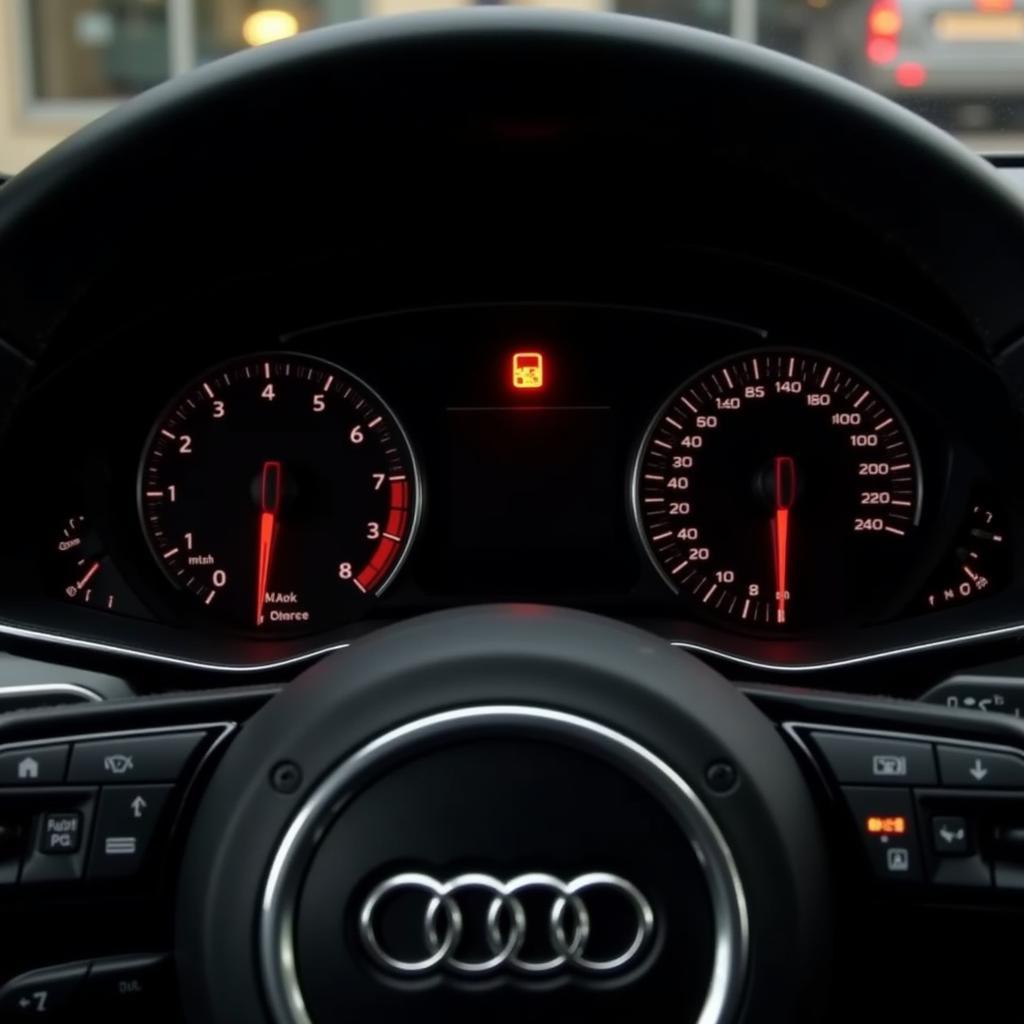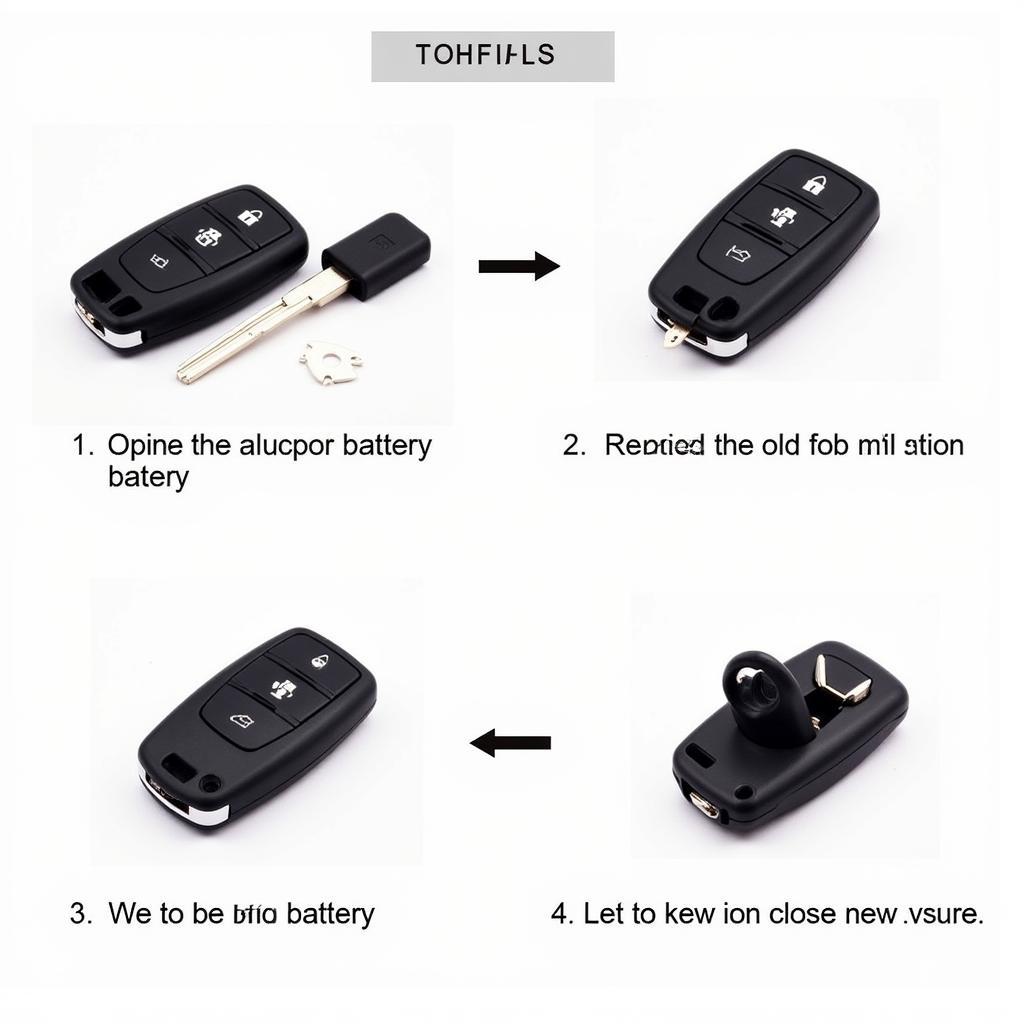The dreaded anti-lock brake (ABS) warning light illuminating on your BMW dashboard after a seemingly simple tire change can be a frustrating experience. This article will delve into the common causes, diagnostic procedures, and solutions for this issue, empowering you to address the problem effectively. We’ll explore how seemingly minor disruptions during a tire change can trigger this warning light and provide actionable steps to get your BMW back on the road safely.
Why Does My BMW ABS Light Come On After a Tire Change?
Several factors can contribute to the ABS warning light appearing after new tires are installed. While the ABS system itself isn’t directly involved in the tire changing process, certain actions during the procedure can inadvertently affect related components.
- Wheel Speed Sensor Damage: The most common culprit is accidental damage to the wheel speed sensors. These sensors, located near each wheel, monitor wheel rotation and relay this information to the ABS control module. Even slight bumps or misalignments during tire mounting can disrupt these sensitive sensors, triggering the warning light.
- Damaged Wiring: The wiring connected to the wheel speed sensors is equally vulnerable during a tire change. A pinched or severed wire can interrupt the signal flow, leading the ABS module to detect a fault.
- Brake Fluid Level: While less directly related to a tire change, low brake fluid can sometimes coincide with the timing and trigger the ABS light. It’s important to check your brake fluid level as part of your diagnostic process.
- Faulty ABS Module: While less frequent, a malfunctioning ABS module can also cause the warning light. This is usually accompanied by other brake-related issues.
Diagnosing the Problem: A Step-by-Step Guide
To pinpoint the exact cause of the illuminated ABS light, follow these steps:
- Visual Inspection: Carefully examine the area around each wheel, paying close attention to the wheel speed sensors and their wiring. Look for any signs of damage, such as bent or broken sensor tips, loose connections, or frayed wires.
- Check Brake Fluid: Ensure the brake fluid reservoir is filled to the appropriate level. Low brake fluid can activate the ABS warning light.
- Diagnostic Scanner: If the visual inspection doesn’t reveal the problem, using a BMW-specific diagnostic scanner is crucial. This tool can read the fault codes stored in the ABS module, providing specific information about the issue.
“A proper diagnostic scan is indispensable in identifying the root cause of the ABS warning light,” says Michael Schmidt, a seasoned automotive electrical engineer specializing in BMW diagnostics. “Guesswork can lead to unnecessary repairs and wasted time.”
Fixing the Issue: Your Options
The solution depends on the diagnosed problem:
- Sensor Replacement: If a wheel speed sensor is damaged, replacement is necessary. bmw x3 brake warning light
- Wiring Repair: Damaged wiring requires careful repair or replacement of the affected section.
- Brake Fluid Top-up: If low brake fluid is the culprit, top it up to the recommended level.
- ABS Module Repair/Replacement: A faulty ABS module might require repair or replacement, which is best handled by a qualified technician.
Preventing Future Issues
A few preventative measures can minimize the risk of encountering this issue after future tire changes:
- Choose Reputable Tire Shops: Opt for experienced technicians who understand the sensitivities of BMW’s braking systems.
- Communicate Clearly: Inform the technicians about your concerns regarding the ABS system.
- Regular Maintenance: Routine brake system checks can help identify potential issues before they escalate.
How do I reset my BMW ABS light after a tire change?
Once the underlying issue is resolved, the ABS light may require a reset using a diagnostic scanner. In some cases, the light may turn off automatically after a few driving cycles.
Can I drive my BMW with the ABS light on after a tire change?
While you may still be able to drive, it’s highly recommended to address the issue promptly. The ABS system plays a vital role in maintaining control during emergency braking situations. bmw x3 brake warning light
What is the average cost to fix a BMW ABS light issue?
The cost varies depending on the specific problem, ranging from a simple sensor replacement to a more complex module repair. Consulting with a qualified BMW technician is crucial for an accurate estimate.
Why is it important to address the BMW ABS warning light immediately?
Ignoring the warning light can compromise your safety, especially in slippery conditions. The ABS system prevents wheel lock-up, allowing you to maintain steering control during hard braking.
“Addressing the ABS warning light promptly is not just about fixing a light on the dashboard; it’s about ensuring your safety and the optimal performance of your BMW’s braking system,” advises Emily Carter, a leading expert in automotive electronics and diagnostics.
Conclusion
The BMW anti-lock brake warning light coming on after a tire change can often be traced back to disruptions of the wheel speed sensors or their wiring during the tire installation process. By following the diagnostic steps outlined in this article and taking appropriate action, you can effectively resolve the issue and restore the full functionality of your BMW’s braking system. Remember, a properly functioning ABS system is critical for safe driving. Don’t hesitate to seek professional help if you’re unsure about any aspect of the diagnosis or repair.



